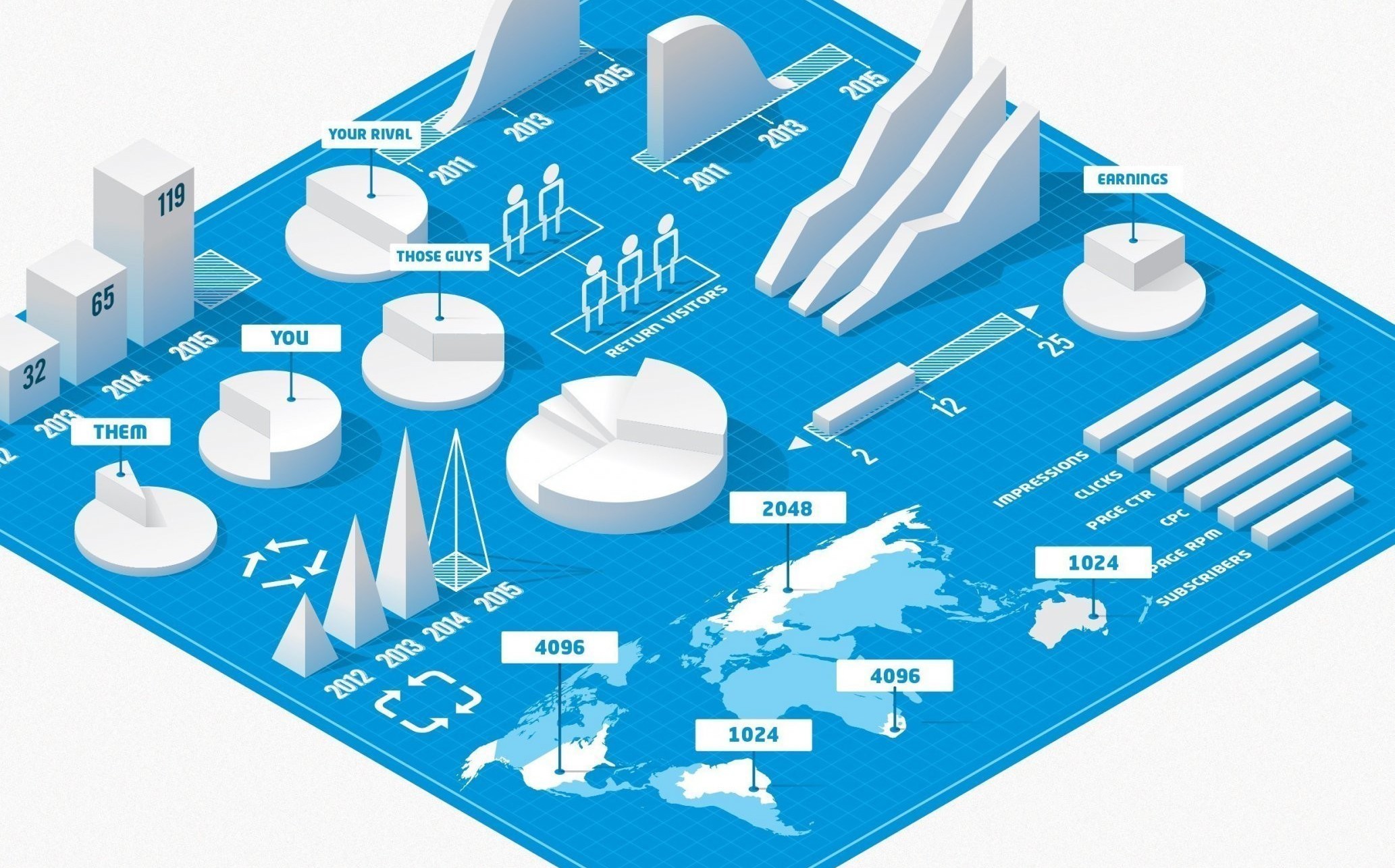Demonstrating return-on-investment (ROI) is a key challenge whenever we launch a new website. While Google Analytics can provide a rich set of data about a website’s performance, it’s hard to draw meaning from those metrics without a basis for comparison.
The standard for web analytics measurement has always been year-over-year (YOY) comparison. Because seasonality has such a strong affect on web searches and purchase behavior, comparing data from month to month can often skew the numbers. In a perfect world, we could measure YOY data as soon as a site launched. However, that’s a rare occurrence. Too often, clients either never installed analytics, or have long since lost access to an account set up by a former vendor.
In September, Google Analytics launched some new features which help provide another excellent basis for comparison. The new Benchmarking reports allow you to view your website’s key performance indicators (KPIs) against similar sites. While Benchmarking reports have been a feature for a while, the new version offers the ability to truly compare apples to apples.
The new reports allow marketers to select from 1,600 industry categories, 1,250 markets and seven size-buckets. You can compare your site’s performance against metrics related to channel, location, or device. Previously, the industry categories were too broad to be truly useful, and the data degraded when you tried to narrow down to “markets” smaller than an entire country.
The new benchmarking data is also presented in a more accessible visual as well. Benchmarking reports show a heat map, so marketers can quickly identify areas for improvement, and areas where they excel compared to the competition.
This new benchmarking data has already proven extremely helpful to us. When we launch fully-responsive websites, we can almost immediately see the gains our clients have made in performance with mobile visitors and improved search engine traffic. It’s not just some abstract “comparable sites” data -- we can show clients their website is performing better, not just compared to their old site, but to the average performance of their direct competitors.
And there’s more good news to come. This week, Google Analytics announced even more improvements coming soon. Here are a few of the new features they will be rolling out:
- iOS install tracking. You’ll be able to see detailed app installation data right in your analytics dashboard. If app installs are an important conversion metric for your business, this is great news.
- Enhanced E-Commerce features. This will give a more robust picture of customer behavior to e-commerce marketers.
- Improvements to tag management. This feature is aimed more at Google Analytics power users, who utilize tagging to deeply customize their reporting. It will also provide improved coverage for 3rd party tags, such as AdRoll, comScore, Clicktale and more. This will be a huge boon to your media buyer in connecting your ad buys to website ROI.
Agencies and marketers rely on good data to make good decisions. These recent and impending improvements from Google Analytics will provide better visibility to what is working and what isn’t. You’ll soon enjoy a broader view of your whole landscape of marketing metrics.
Want to know more about how to pull valuable business insights from your analytics? Hit me up for a chat.

